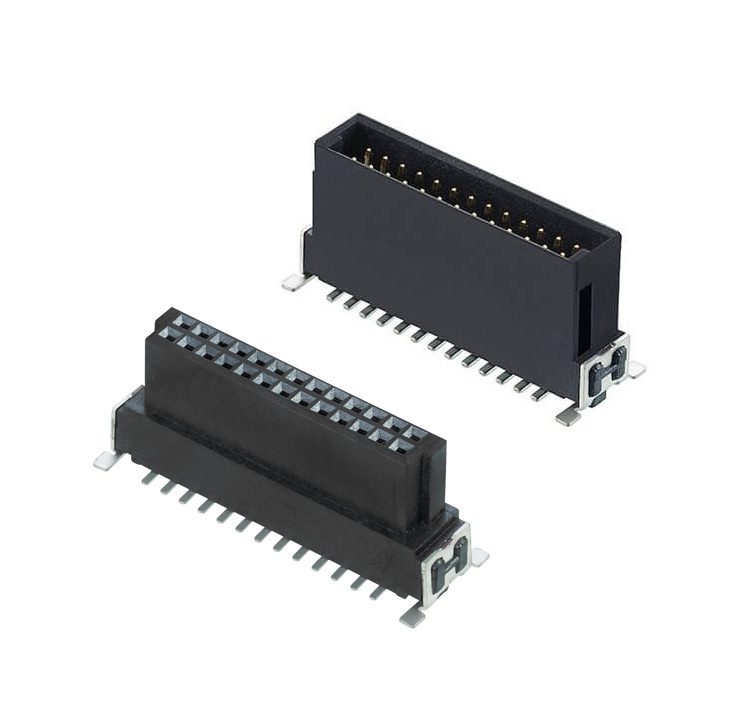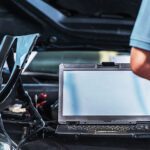Building a Better EV Battery Monitoring System
New interconnect technologies help design more efficient, more powerful electric vehicles beginning with the battery pack.

The foundation of any electric powertrain is the EV battery pack, as it is here that electrical energy supplied by charging infrastructure is stored. When the vehicle is moving, the battery is responsible for delivering this energy to the traction motor. For many years, EV battery technology was unable to provide the same performance as petrol and diesel, oil-based fuels that deliver high energy density from a relatively small volume and weight. However, recent developments in Lithium-ion (Li-ion) batteries allow EVs to offer performance that rivals traditionally powered cars.
The battery pack is one of the heaviest and bulkiest parts of the vehicle. Automotive OEMs are constantly looking for ways to make their EVs lighter. Reducing vehicle payload allows them to consume less power and travel longer distances between charges. By increasing the battery’s charge capacities, it can be made more lightweight and take up less room. This means that a greater number of cells must fit into the same volume. The latest generation of EVs can integrate as many as 8,000 to 10,000 Li-ion cells in their battery packs. Each of these will need to be monitored via the battery management systems (BMS) – which represents a substantial data overhead. Consequently, higher density BMS infrastructure that can support faster transfer rates is now being required.
These batteries also need to withstand repeated charging and discharging cycles during the life of the vehicle. The performance of the battery depends on each cell. If one cell becomes damaged, it might not be able to accept the same charge as its neighbors, compromising the performance of the vehicle. To counter this, electric vehicle batteries employ sophisticated BMS designed to ensure that the battery pack is charged in a safe and repeatable manner.

Harwin’s Archer Kontrol connectors meet the contact density and data rate expectations of modern BMS deployments. They can withstand 20G vibrations, 50G shocks, and temperatures from -55 °C all the way up to 125 °C. Stacking heights from 8 mm to 20 mm can be sourced. Off-the-shelf cable assemblies (measuring 150 mm or 300 mm in length) can be provided.
Electric power in harsh conditions
BMS must provide additional functions to ensure the safety and reliability of the battery pack. The automotive environment is tough on components. Even in normal conditions, equipment is exposed to rain, wind, and weather, along with the dirt and dust found on the road surface. At the same time, consumers expect reliability from their vehicles.
The shock and vibration that cars experience in everyday use are a challenge to their long-term reliability. With modern vehicle-based electronics operating at data speeds in excess of 1 Gb/s, even a momentary break in connection caused by vibration can lead to the loss of huge amounts of information. In safety-critical applications, this loss of connection has the potential for disaster. Connector design must include vibration and shock resistance to eliminate this risk.
These challenging conditions are especially important for EVs. Li-ion batteries work best in conditions that their human users would find comfortable. Extreme temperatures adversely affect their performance, and they are at risk from water intrusion, which can cause damage to the structure of the battery and lead to fire. Fire in a Li-ion battery pack can result in a dramatic event called a thermal runaway. Battery management systems therefore provide additional monitoring within the battery itself to prevent unsafe conditions from developing.
Designing connectors for EVs
The BMS plays a critical role in ensuring the safety, reliability, and performance of the battery itself. This has several major implications for designers when choosing the connectors that join the battery and BMS with the rest of the vehicle.
One of the greatest challenges for designers is size. Manufacturers are packing more cells into automotive batteries to increase the energy density and improve vehicle performance. As a result, the monitoring systems must handle a greater number of channels in a smaller space, and so the connectors required for this interface must be compact and offer high pin counts. Designers will also value connector designs that offer a range of pin count options to deliver the maximum flexibility.
The connectors also need to deliver high data rate capabilities. Safety in the automotive marketplace is of paramount importance, and systems need to be able to collect, analyze and act upon information about their surroundings with the shortest possible delay. Connectors employed in BMS must offer high-speed communication with the lowest possible latency to ensure unsafe conditions will not develop.
In addition, signals need to be protected from the dangers of interference. Many components within vehicles, from electric motors to communications devices, create radiation that can interfere with sensitive electronics. To protect the signal contacts, the connector can be protected against electromagnetic and radio frequency interference (EMI/RFI), with a shield made of a conductive material.
These connectors must be robust enough to survive in the tough automotive environment. With the constant problem of moisture, dust, and other contaminants, connectors need to be sealed against the elements, even when subjected to shock and vibration. They need robust mechanisms to create a secure connection, while also allowing easy operation for assembly or maintenance. Whether using screw locking or latching systems, the connector hardware must prevent accidental disconnection. As fully functional battery management systems play such an important role in EV safety, the reliability and security of their connections is of paramount concern.
Beyond the family car
BMS technology is not limited to the family car; it’s being employed in a huge range of automotive applications. Leading manufacturers of industrial and agricultural vehicles are developing electric power solutions, and some large commercial operators are changing to an all-electric fleet.
Commuters are also benefitting from the improvements in EVs. Many authorities are introducing legislation that limit the use of cars in city centers, replacing them with public transport. In this environment, commuters need mobility for what is known as the last mile. This is the name given to the final part of any journey from the bus stop or subway station to the destination. Modern electric bikes and scooters are attractive solutions for cities, providing a pollution-free, accessible, and convenient solution for commuters. All these electric vehicles, large and small, will depend on BMS to keep their users safe.
See more innovative solutions for electric vehicles at Harwin.
Like this article? Check out our other articles on EV’s and HEVs and Connected Vehicles, our Automotive Market Page, and our 2024 Article Archive.
Subscribe to our weekly e-newsletters, follow us on LinkedIn, Twitter, and Facebook, and check out our eBook archives for more applicable, expert-informed connectivity content.





